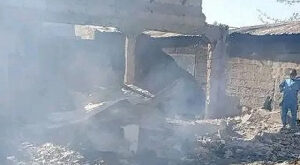In Benin, lying in Lake Nokoué, near Cotonou, is Ganvie and its famous floating market. This is where items found on canoes are not just seafood products but any product you would find in an ordinary market — vegetables, fruits, soaps, medicinal plants, cooking oil, and so on.
In the lake village of Ganvie, fishermen buy from traders on the lake. Everything occurs around the water. Customers are served right from the market on the Lake Nokoué in an area now nicknamed the Venice of Africa. This is how Ganvie, otherwise known as Africa’s largest town on stilts, and its popular floating market came about.
In the 1600s, amid the Portuguese slave trade in Africa, the Tofinu people of Southern Benin fled to Lake Nokoué to avoid being captured by the Fon people of the great kingdom of Dahomey (present-day Benin). Fon warriors of the West African kingdom were capturing people and selling them as slaves to European traders.
But the religious beliefs of the Fon did not allow them to fight on the sacred Lake Nokoué, according to history. Hence, the shallow waters and islands of the lake became a haven for the Tofinu, who soon established their new home there. After several decades, the Tofinu settlement in the middle of the lake is now Ganvie, home to about 20,000 people who live in bamboo huts built on stilts.
Ganvie is believed to be the largest lake village in Africa, with residents mostly known as the “water men”. The lake village with its more than 2,000 buildings including a bank, hospital, church, mosque, a post office, and of course the floating market, has been attracting tourists since it was created. Its school is one of the few buildings not on stilts, as stated by CN Traveler.
Residents engage in fishing and fish farming as the lake continues to serve as a source of food and economic activity for all. To move from one place to the next, residents row dugout canoes and it is these same dugout canoes that they use in fishing, which is usually artisanal. Visitors say Lake Nokoué, which is 20 km wide and 11 km long and covers an area of 4,900 ha, is also used for Acadja, a type of fish breeding facility.
Thanks to the wonders of Ganvie including its floating market that is alive mostly from 4 am until 10 am, the lake village was added to the UNESCO World Heritage Tentative List on October 31, 1996, in the Cultural category.
Source: face2faceafrica.com
 Home Of Ghana News Ghana News, Entertainment And More
Home Of Ghana News Ghana News, Entertainment And More





